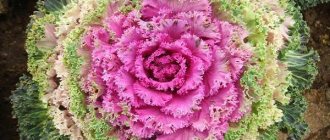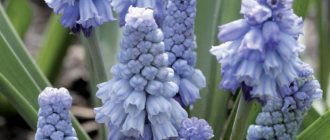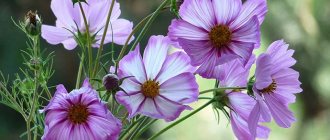Planting and caring for roses for beginners
Choosing the right variety for a specific area will make it easier to care for seedlings in the open ground.
Which variety to choose depending on the region
Varieties of roses differ in type and method of cultivation. But not all are suitable for a particular climate zone. This should not be forgotten when growing in open ground.
Variety Amadeus
In central Russia, the climate is suitable for cultivating roses. Therefore, there are many recommended varieties. Among them are the climbing rose Amadeus, the bush rose Charles Austin, the unpretentious winter-hardy varieties Florentina and Leonardo da Vinci, the standard (tree-like) varieties Geisha, and Princess of Monaco.
Recommended hybrid tea varieties: Barbara, Omage, Gloria Dei, Aphrodite, Ingrid Bergman and the similar floribunda rose. Among the park roses, Queen of the North, Golden Wings, Agnes and Hansa are popular.

Hybrid tea variety
The climate in the Ural region is unstable. Varieties are selected that can tolerate both heat and cold. These are the following varieties of climbing roses: New Dawn, Rosaria Western, Golden Celebration. Varieties recommended specifically for the Urals - winter-hardy spreading bush Flamentanz, climbing rose Super Excelsa.
Note! For cultivation in harsh climates, frost-resistant plants are needed. In this case, Canadian roses are suitable.
The catalog of roses for home growing is quite large. All that remains is to make the right choice.
How to choose a rose variety
The choice of variety determines whether plants will bloom in the region, so young gardeners are better off listening to the advice of professionals.
Important! If you want to choose a southern variety for the northern regions, seedlings are bought in local rose gardens, where the varieties have been acclimatized.
What are roses
Rose is the general concept of all varieties and species of plants belonging to the genus Rosehip and cultivated by humans.
Depending on the variety, the shape of the rose bush is:
- drooping;
- ground cover;
- spreading;
- narrow pyramidal.
The height of the rose ranges from 20 cm for miniature varieties and up to six meters for long-climbing roses, which are cultivated in hot regions.
More details about the height of roses:
- 25–35 cm - miniature roses;
- 30–45 cm (sometimes up to 60 cm) - polyanthus roses;
- 30–90 cm - hybrid tea and floribunda roses;
- 2.5–6 m - climbing roses.
Some roses have branches covered with small thorns, while others have completely bare branches. Thorny rose bushes may have large, curved or short, straight thorns densely located on them.
The leaves of roses are also different. They can be leathery, glossy or elongated, as well as dense or with pointed tips.
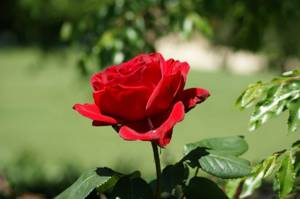
The diameter of a rose flower ranges from 2 to 18 cm. Simple buds have 5 petals, and dense buds have up to 128.
Based on the number of petals they are divided into:
- simple roses - no more than 7 petals;
- semi-double - 8–20 petals;
- terry - from 20 petals;
- densely double - from 60 petals.
Flower shape;
- spherical;
- round;
- conical;
- socket;
- cup-shaped;
- cross-rosette;
- pitcher;
- flat.
Rose color
Roses come in a variety of colors, with the exception of pure blue:
- red;
- scarlet;
- white;
- pink;
- cream;
- burgundy;
- yellow;
- orange;
- raspberry;
- green;
- lilac;
- black;
- brown;
- purple;
- blue.
These flowers can not only be monochromatic, but also combine different colors, as well as change shade throughout the flowering period.
Where to get seedlings
Clematis - planting and care in open ground for beginners
Garden stores sell three types of seedlings: with an open or closed root system and in a container. Requires landing immediately after purchase. Otherwise, the seedlings are kept for 2-3 days in a bucket of water, then the roots are packed with film and the planting material is left in the basement or cellar. But even in this case, they do not delay the landing.
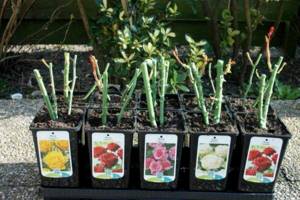
Rose seedlings purchased from a specialized flower shop
Note! Professionals recommend planting roses in late autumn, but in central Russia and the north it is better to do this in the spring, otherwise the roots will not have time to take root before frost and the plant will die.
Buying ready-made seedlings, how to choose the right one
The choice of seedlings is a crucial step on which the future appearance of roses depends.
What should a healthy seedling look like:
- green strong and elastic stems and shoots, bark without breaks or bends, rot;
- large healthy and well-developed buds;
- the root system is without rot or breaks, the earthen ball is moist;
- the leaves are without damage or stains, they are rich green on both sides.
Each seedling is required to have a label indicating information about the product. She is being studied carefully. She will talk about the seedling variety, immunity, resistance to cold, disease and decorative characteristics. This is the ADR marking.
Important! When purchasing a seedling, pay attention to the number of shoots. High-quality planting material has more than 3 shoots, 2 of which are from grafting.
Growing seedlings yourself
At home, seedlings are obtained from seeds and cuttings.
Seeds can be purchased at a specialized flower shop or collected independently from a faded plant of your choice. It is better to collect unripe fruits and plant. The germination rate of immature seeds increases.
Experienced gardeners love the cutting method and consider autumn to be the right time for this. Autumn petioles take root better and are easier to pick up when pruning. Roses grown using this method adapt well to living conditions, soil, frost and summer drought.
Watering rules
Roses love moisture, but cannot tolerate waterlogging. In the middle zone, during dry summers, it is enough to water the flowers once a week in the morning or evening. Adult roses need a bucket of water for watering; seedlings need half a bucket. In hot and dry weather, the plant should be watered daily.
We recommend using well-settled tap water or rainwater for irrigation. After watering, be sure to loosen the soil to provide the root system with air. To prevent moisture loss, mulch the soil surface with hay or compost.
Step-by-step landing procedure for beginners
If roses are chosen correctly, planting and caring for outdoors will not be difficult for beginners. But it is necessary to adhere to a certain procedure.
Choosing a suitable location depending on the type of rose bush
Park rose: planting and care in open ground
Roses prefer sunlight during the day, but direct sunlight will negatively affect flowering. Flowers become faded and quickly fade, so partial shade is chosen. The recommended place for planting is along the fence, as well as near low garden trees.
Important! Select a landing site without drafts or gusty winds. Groundwater should not be higher than 1 m.
Soil preparation
Each selected variety needs soft, loose and fertile soil with an acidity level no higher than 6–6.5. Neutralize the soil with wood ash or lime. Alkaline soil is acidified with peat, moss, and organic matter.
The soil must have good water and air permeability. It is better to choose loamy soil. Clay soil is enriched with humus, peat, compost, and sand. Peat and turf are added to the loose mixture.
Planting a seedling
A hole is dug with a diameter of 0.6 m and a depth of 0.4 m. The root of the seedling will fit in such a hole.
Fertile soil: peat, humus, turf soil in equal volumes. Add superphosphate and ash or potassium sulfate. The hole is filled with drainage, then half filled with the prepared mixture and watered generously. Cover the hole with film and wait 2 weeks. Then they open the hole and begin planting.
Landing algorithm:
- Part of the soil is removed from the hole.
- A mound is made in the center, on top of which a seedling is placed so that the root collar is at the same level as the edge of the hole or slightly lower.
- The roots are straightened.
- Sprinkle with earth, then water the plant, using a bucket of water on the bush.
- Pour out the rest of the soil, then compact the soil with your hands.
- A roller of earth 8 cm high is formed around the bush.
- The resulting tree trunk circle is mulched with humus.
Important! If the seedling was bought in a container, it is planted with a ball of earth.

Planting a rose seedling in open ground
If the root collar sank during the first watering, do not worry. This is normal when it deepens 3–5 cm.
Popular varieties of roses

Black magic
The variety of this plant belongs to the hybrid roses. Black Magic blooms with one bud or 4 inflorescences from July to September. The petals have a velvety texture and iridescent hue. The rose tolerates cold, frost and hot weather well. Suitable for growing in Moscow and the Moscow region.
Motley fantasy
Variegated Fantasy has 2-color petals, bright crimson with white accents, the reverse side of which is yellow. Repeat-blooming, with 1 to 3 flowers per stem; if it rains, there is a possibility of damage to the flowers.
Iguana
This rose has an original color transition from soft coral to a pearly peach tint in the middle of the flower. Iguana belongs to the hybrid tea roses, it has a tall bud, and the shape resembles a glass, which consists of a large number of petals.
The open bud reaches 12 cm in diameter, and there are up to 40 petals in it. The height of the rose reaches 120 cm.
Limbo
This rose has a soft yellow tint with a greenish tint and is a repeat bloomer. It has cone-shaped buds. The height of Limbo bushes reaches approximately 80 cm, the diameter of the flower is 9 cm, the number of petals in the bud is about 47.
Latina
Hybrid tea rose Latina, the stem length reaches 60–90 cm, the diameter of the bud is 5–6 cm. The bud has a bright yellow color. This variety is perfect for making business and romantic bouquets.
Malibu
This variety of hybrid tea rose was bred in Holland. A bouquet of such roses is perfect as a gift for various celebrations.
The length of the Malibu stem reaches 120 cm. Its bud is medium-sized and oblong, not lush, but quite tall.
The flowers have a delicate color, which in the lower part of the bud is white with a slight touch of light green, but closer to the edges the petal becomes light pink.
Z-C
Another variety of hybrid tea rose, which is the most famous among the “blue roses”. It has tall and pointed buds, the flowers have shades from silver-lilac to blue. The Zi-Si rose bush can reach 110 cm.
This variety survives the cold well and is ideal for growing in the Moscow region.
Osiana
A variety of hybrid tea rose, the main shade is creamy, pastel colors. The diameter of the flower is 7–11 cm, the height of the bush is 1.2–2 m. There are 40–45 petals in one bud. There are practically no thorns on the Osian rose.
Osiana is quite capricious to weather conditions. It is best to grow it at a temperature of 24 degrees.
Bella Vitta
Hybrid tea rose Bella Vita has densely double 2-color buds with white and dark pink tints. Ideal for growing in the Moscow region.
The flower diameter is 12–14 cm, with up to 40 petals in one bud. The bush reaches 80 cm in height.
Blue Bird
A hybrid tea rose variety with high frost resistance, suitable for growing in the Moscow region. Blue Bird can grow from 1 to 3 flowers on one stem, the height of the bush is from 80 cm to 1 m.
The color of the rose is lilac. It has good disease resistance.
Dolce Vita
A two-color hybrid tea rose, often used to decorate festive tables or bridal bouquets. This flower is great for cutting and lasts for a long time in bouquets, maintaining its original activity.
Rose Dolce Vita has large flowers, the bud diameter is 8–10 cm, and consists of 38–40 petals. A characteristic feature of the flower is the snow-white terry petal fabric at the base of the flowers.
Black Baccarat
This is a variety of hybrid tea rose, which is considered the blackest rose in the whole world, despite the fact that its true shade is dark burgundy. The bud has several shades - at the ends of the petals it is burgundy, and inside it is black. In autumn, the color of the rose becomes darker, and if the soil is acidic, the color becomes stronger.
The height of the bush reaches 110 cm. The buds are goblet-shaped, reaching 12 cm in diameter (40–45 petals), of medium size.
Black Baccara blooms twice per season between July and October. The plant is quite frost-resistant. When planting in the Moscow region, it is recommended to insulate the rose for the winter.
Anastasia
This variety of hybrid tea rose is white with barely noticeable pink specks. The height of the rose bush reaches 110 cm. The flowers are large, their diameter is 10–11 cm, and consist of 40–45 petals. A characteristic feature of the Anastasia variety is the slow opening of buds; roses bloom several times during the season.
This variety is moderately resistant to diseases, but tolerates frosts and long rainy periods quite well. Great for growing in the Moscow region!
Wendella
The tea-hybrid white-cream rose, which also has an ivory tint, will be the ideal decoration for a wedding bouquet. This rose bush reaches a meter in height and no more than 80 cm in width. One bud with a diameter of 9–10 cm contains 30 or more petals.
The Wendella variety is moderately resistant to disease and rain. But at the same time it is frost-resistant, suitable for growing in the Moscow region. If the temperature drops below 6 degrees Celsius, then the rose should be covered.
Double Delight
A common variety of hybrid tea roses. A characteristic feature is the variety of flower colors even on one bush. The bud is two-colored, its center is creamy white, and the edges are crimson.
When in full bloom, the diameter of the flower is 12–15 cm. Double Delight blooms twice: at the beginning of summer and at the end of August. The flowers are found singly on tall stems 60–70 cm. The height of the bush reaches 120 cm.
This variety is frost-resistant. Suitable for growing in the Moscow region and other northern regions. For the winter it needs insulation.
Osiria
This variety of hybrid tea roses has elongated buds and a pleasant aroma. These rose bushes are used for decoration of cottages, gardens and for cutting.
Osiria has large buds, the diameter of which ranges from 12 to 16 cm. The upper part of the flower is dark red, the lower part has pink edges. The height of the bush is 70–80 cm.
Osiria tolerates rainy weather well, but the rose is demanding to care for.
Kerio
A hybrid tea variety of roses, which has a small number of thorns, the height of the bush reaches 120 cm. The bud has the shape of a glass, its diameter is 13–15 cm, the number of petals is up to 35.
Flowering occurs throughout the warm season. The bright yellow buds hold their shape well due to the fact that they bloom slowly.
Kerio cut flowers remain fresh for ten days. This variety tolerates cold well and is suitable for growing in the Moscow region.
Pierre de Ronsard
This climbing variety of roses is remontant. The height of an adult bush can reach 3 m, and the width - 2 m. The rose reaches these parameters at the age of 3-4 years. The buds are large, their diameter is 8–10 cm, 60–70 petals in one flower.
Pierre de Ronsard's shades range from cream to pale pink. The rose is resistant to disease and cold, excellent for growing in the Moscow region.
Golden Carpet
This excellent climbing plant with evergreen lemon-golden flowers blooms throughout the summer season. Calmly tolerate shade and partial shade.
The height of the Golden Carpet bush reaches 3–4 m, the diameter of the bud is 10 cm. The flowers are not afraid of rain and wind. This variety is extremely rarely affected by pests.
Pastella
This rose variety belongs to the Floribunda group and has a white-cream color. The diameter of the flower is 7–9 cm. Pastella is used in rose gardens and to decorate borders; it blooms from early summer until late autumn.
Tolerates frost, rainy weather and powdery mildew well. Suitable for growing in the Moscow region.
Red Paris
A variety of hybrid tea rose with a dark red or burgundy color. The diameter of the flower is 7–12 cm, the double size is 30–45 petals. Blooms from May until the first frost. The height of the Red Paris bush is 90 cm. Average frost resistance and disease resistance.
Aqua
This variety of hybrid tea rose was created by Dutch breeders. The height of the bush reaches 80–100 cm, width - 50–60 cm. There are practically no thorns on the stems.
Aqua colors: hot pink, lilac, purple. Flowers reach 12 cm in diameter.
Flowering occurs at the end of July and continues until the temperature is minus 10 degrees.
Cherry Brandy
This is a German variety of hybrid tea roses. The height of the bush reaches 70–90 cm; there are from 1 to 3 flowers on one stem. Suitable for growing in the Moscow region, not afraid of cold and rainy weather.
The color of Cherry Brandy is honey-orange inside and pink to wine-colored outside.
Mushimara
A variety of climbing rose with a blood-red hue. One flower grows on one stem, the diameter of which is 13 cm. The bush reaches 3–4 m in height and 2–3 m in width.
Mushimara blooms throughout the summer, tolerates cold well, and can be used for planting and growing in the Moscow region.
How to care for roses in the country
Decorative onions - planting and care in open ground
Watering the seedling after planting is carried out as the soil dries, approximately once a week. In hot weather, water more often.
Important! After watering, as after rain, the soil is loosened so that a crust does not form.
Feeding a young bush
Caring for roses in the spring at the dacha in an open area includes fertilizing. The first time is fed before the buds begin to form. Use calcium nitrate at the rate of 1.5 tbsp. spoons into a bucket of water. During the period of active growth, they use a liquid infusion of mullein, mineral supplements, and herbal infusions. Fertilize once a week.
Is it necessary to prune young bushes in the first year?
In the first summer after planting, they are engaged in the formation of a bush. Trimming and pinching are carried out. Not all roses are heavily adjusted. At this time, park and climbing roses should form strong shoots that will bear flowers next summer. Other varieties are adjusted intensively. But pruning and pinching are completed by the end of May.
Note! A mistake gardeners make is allowing seedlings to bloom in the first summer. At this time, the plant should get stronger and devote all its strength to the development of the root system. Instead, energy is spent on flowering.
How to prepare a shrub for the first wintering
The first winter is dangerous for rose bushes, so preparations are carried out carefully. At the end of August, they stop watering and apply phosphorus-potassium fertilizers. At the end of September, the roots are insulated with snow, fallen leaves, and earth. The height of the column should be 20 cm.
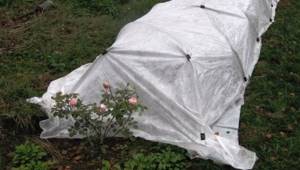
Warming rose bushes for the winter
In light frost (-5 °C) the bushes are not covered. This temperature serves as a hardening for the rose. At lower thermometer readings, a frame is pulled over the bushes, on which insulation is placed.
Caring for roses after winter step by step:
- Freeing roses from winter shelter.
- Pruning and cleaning roses from rot and frozen shoots.
- Creating a greenhouse effect (cover the cleaned rose with a jar) for final awakening. Opening a greenhouse is not limited in time.
How to care for roses in spring:
- watering. In the spring, when the air humidity is high or moderate and the ground is not overheated, water the roses with warm, settled water abundantly, but infrequently. Later water more. The right time for watering is morning and evening. During this period, spraying is possible, to which roses respond well;
- feeding In spring, seedlings lack potassium, magnesium, nitrogen, and phosphorus, so organic, mineral or complex compounds are added.
The soil is pre-moistened, then 30 g of a mixture of ammonium nitrate and ammonium sulfate, taken in equal volumes, is added per 1 m².
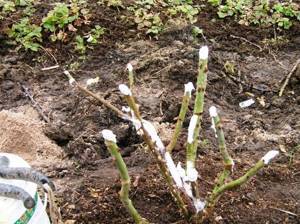
Cleaning roses after wintering
How to plant roses
In order for roses to grow well and bloom profusely, you need to take care of their proper planting:
- The seating area should be well lit and protected from the cold north wind.
- The ideal soil for planting is neutral, fertile, well-drained and of medium density. Clay or sandy soil is definitely not suitable.
After choosing a place for planting, we proceed to preparing the planting hole:
- Dig a hole one meter deep and its diameter from 0.5 m.
- Pour drainage composition (crushed stone, pebbles or broken ceramic) onto the bottom.
- Add a layer of humus on top, and another layer of soil on top.
- Place the roots of the rose seedling on the soil.
- Fill the hole so that the grafting site is 5 cm below the ground level.
- Compact the soil well and water the seedling with a bucket of water.
Disease protection and pest control
Many varieties of roses are not afraid of diseases and pests due to their strong immunity, but the risk still remains.
Among the diseases of roses, the following types are dangerous: powdery mildew, black spot, rust and pests: aphids and spider mites. If the problem is not resolved in time, they can destroy the plant.
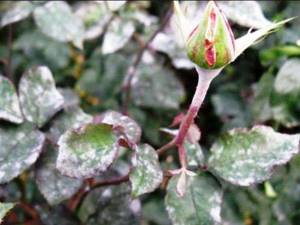
Diseases and pests
Every beginner can cultivate roses on their own plot. The main thing is the correct choice of planting time, the optimal seedling variety for the region and compliance with agricultural technology conditions. And then the site will delight you with its unique colors and aroma for many years.
Garden rose: care and cultivation in the garden
What are hybrid tea roses: description of the best varieties, care rules
Caring for street roses is not as difficult as it might seem at first glance. Basic actions:
- regular watering;
- timely application of fertilizers;
- treatment of bushes from pests;
- elimination of diseases.
In addition, the plant needs pruning - both hygienic and decorative (to form a bush).
It is also necessary to follow the rules for preparing the plant for winter.
The procedure for watering the plant
Watering is carried out as the soil dries in the amount of 10 liters per bush. The bushes should be moistened in the evening. In cold weather, watering is reduced.
Fertilizer
It is necessary to feed roses up to 7 times per season:
- the first time - in mid-April, ammonium nitrate is used as fertilizer;
- after 14 days the procedure is repeated;
- during the formation of buds they are treated with complex fertilizers;
- before flowering, add mullein infusion;
- at the end of the first wave of flowering, a complete complex fertilizer is applied;
- at the end of the season, the rose is fed with potassium.
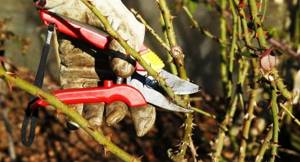
Pruning rose bushes
How to prune a bush correctly
To form a beautiful and neat crown, branches that are too long and stand out from the overall picture are pinched. To ensure that the bush is not very dense, summer pruning is carried out. The essence of the procedure is to remove old, dried, excessively thick and diseased stems.
On a note! Shoots appearing below the grafting need to be pruned.
Pests and diseases of roses
The plant is susceptible to pests such as whiteflies, spider mites, aphids, and caterpillars. To protect the bush from parasites, the bush must be sprayed with special preparations. This should be done in dry weather in the morning or evening.
Among the diseases of roses, the most common are gray rot, fungus, cytosporosis, and rust.
Sheltering roses for the winter
You can't cut flowers in August, because the new shoots that have time to form will not be able to survive the winter. In mid-September, the lower leaves begin to be removed. When the temperature drops to -5 degrees, the roses must be covered, after removing the shoots.
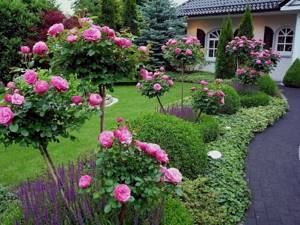
Roses in landscape design
The bush is covered with humus or peat, the tops of the stems are tilted to the ground and covered with spruce branches.
Caring for the Queen of the Garden
They begin to care for roses from early spring until late autumn. What actions need to be taken to make this beauty delight the whole season:
With spring warming, open the bushes - watch the weather, early release will awaken the growth of shoots, but the roots in the frozen ground are not yet ready to feed them, the shoots die.
Pruning bushes is important to do it on time and correctly, there are several mandatory rules - a sharp tool, the correct slope of the cut, removing all unnecessary shoots, processing the cuts.
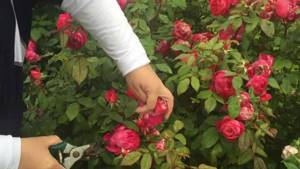
Having formed the bush correctly, the plant will bloom profusely all summer. It is necessary to regularly remove fading buds, this will promote further flowering.
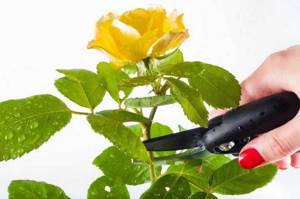
Probably everyone has roses in their summer cottages. They entwine houses, gazebos, simply grow in flower beds, fragrant the whole area and it seems that you really find yourself in a fairy tale with the main character, the queen of flowers - the rose.
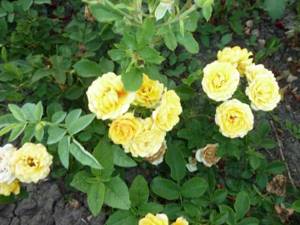
Photo tips on how to grow roses
Read here Kalanchoe: description, growing secrets, care features and flower varieties (95 photos and videos)
Did you like the article?
0
Shelter for the winter
In the middle zone, many varieties of roses need winter shelter to protect them from cold and eliminate excess moisture. It is best to use material made from agrotex or lutrasil for shelter.
It is necessary to begin preparing for the winter cold already in October by pruning immature shoots. With the onset of the first frost, the stems should be bent to the ground, forming an arc structure over them.
Roses should be unpacked in March-April, when the soil has thawed to 20 cm. The procedure should be done in cloudy weather.
How to prepare and cover roses for the winter?
Preparations begin in early September. The culture is examined. A plant with red leaves is not dormant. It is not recommended to remove buds that have bloomed or do other manipulations. When the time comes for the seeds to ripen, the flower will independently begin to prepare for the coming winter.
If the climate is not too harsh, the bushes can be covered with dry leaves, shavings, and sawdust. Winter frosts require the construction of a shelter. The bushes are hilled up and covered with a mixture of sawdust, peat, and sand. The height of the layer should be 10 cm. A frame is made of metal arches or wood over the bushes, onto which insulating material is stretched. Its edges are securely fixed.
The basic rule when planting garden roses
There are many nuances to growing this flowering crop on a personal plot. Beginner gardeners, paying attention to various nuances. The basic rule is often overlooked when planting various varieties of garden roses, most of which are already grafted. This is evidenced by the thickening on the rose.
The grafting site should be buried slightly below the top layer of soil, without remaining on the surface or being too deep. To achieve this, a certain sequence must be followed. First, the seedling is gently shaken, distributing the soil between the root shoots, and then crimped. It sag slightly, so it is pulled up. Thus, the thickening is flush with the level of the substrate.
The holes are dripped before direct planting. The depth is such that the roots are not buried. The optimal dimensions are 50x50 cm. A mixture of organic matter, sand, and garden soil is poured inside. The earth is carefully compacted and the voids are filled. Roses are watered and hilled.
Pruning rules
Pruning varietal roses consists of several types:
- Up to 4 buds from the base of the shoot. Used for spring seedlings and rejuvenation of old roses.
- Up to 7 buds from the base. This pruning promotes the formation of strong young growth and intense flowering.
- Trim only the ends of the stems. This technique is used as a light forming agent to activate flowering.
In addition, flower pruning has seasonal specifics:
- In spring, weak and thickening shoots are removed.
- In summer, gentle pruning is necessary to remove faded flowers.
- In the middle zone, in the autumn, shoots are shortened to the height of the winter shelter. In the southern regions, such pruning may not be necessary.

